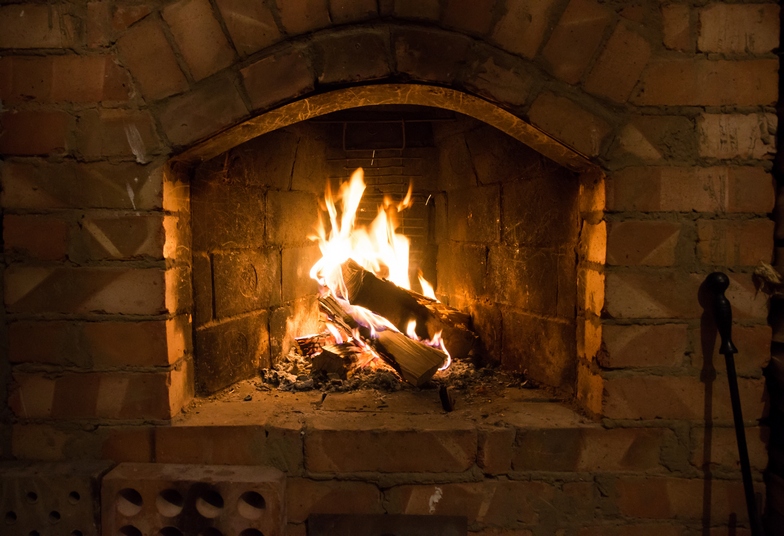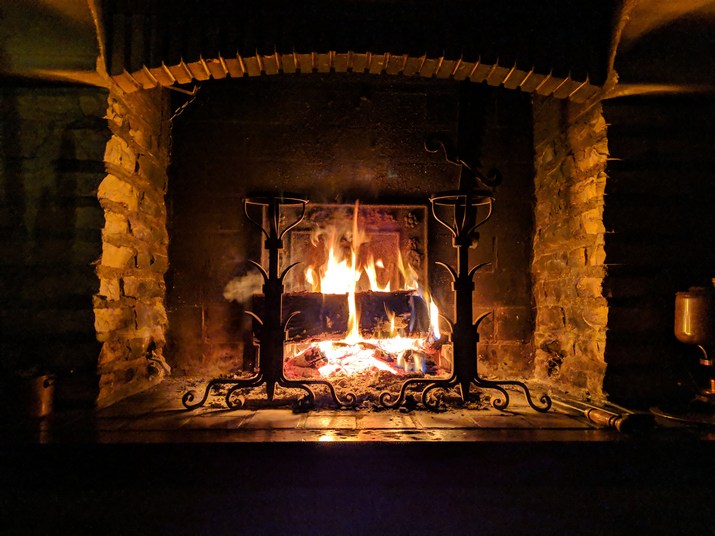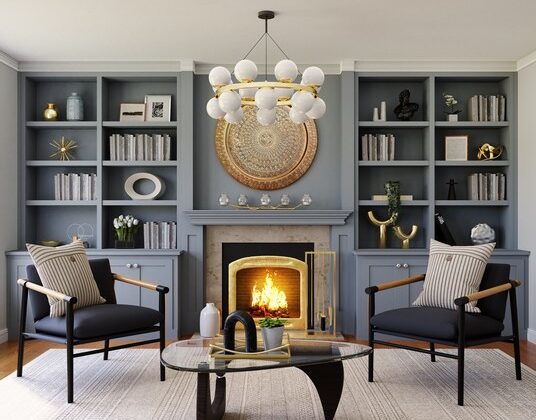Fireplaces can add warmth, ambience, and charm to any home. Whether you’re looking to upgrade your existing fireplace or install a new one, choosing the right fireplace for your home is an important decision. With so many options available, it can be overwhelming to know where to start. But fear not! In this guide, we’ll walk you through the key factors to consider when choosing the perfect fireplace for your home.

1. Determine Your Heating Needs
The first step in choosing the right fireplace is to determine your heating needs. Are you looking for a primary heat source or just a supplemental one? If you live in a colder climate, you may want to consider a fireplace that can efficiently heat your entire home. On the other hand, if you’re just looking to create a cosy atmosphere, a decorative fireplace may be more suitable.
There are different types of fireplaces that offer different levels of efficiency, convenience, and aesthetics. Here are some factors to help you decide:
- Fuel type: The most common types of fuel for fireplaces are wood, gas, electric, and pellet. Each one has its own advantages and disadvantages in terms of cost, availability, maintenance, and environmental impact. For example, wood-burning fireplaces can create a cosy and rustic atmosphere, but they also require chimneys and vents, which can be expensive and complicated to install. Gas fireplaces are more efficient and easier to use than wood-burning ones, but they also produce carbon monoxide and other pollutants that can affect your health. Electric fireplaces are the simplest and safest option, but they also have limited heat output and may not be suitable for large rooms. Pellet fireplaces are a renewable and eco-friendly alternative to wood or gas, but they also require electricity to operate.
- Size: The size of the fireplace should match the size of the room where you want to install it. You don’t want a fireplace that is too big or too small for your space. A fireplace that is too big may take up too much floor space or block the view from other rooms. A fireplace that is too small may not provide enough heat or ambience for your desired effect. You should measure the length and width of your room before choosing a fireplace size.
- Style: The style of the fireplace should complement the style of your home and reflect your personal taste. There are many styles of fireplaces available, such as traditional, modern, rustic, contemporary, etc. You should choose a style that suits your home’s architecture and decor. For example, if you have a classic or colonial-style home, you may want to opt for a traditional or mantel fireplace that features a wood mantel surrounding the design. If you have a contemporary or minimalist-style home, you may prefer a sleek or minimalist fireplace that has no mantel or decorative elements.
- Installation: The installation process depends on the type of fireplace you choose and whether you want it built-in or freestanding. Built-in fireplaces are recessed into the wall and require professional installation by a licensed contractor. They can be either wood-burning or gas-fueled inserts that fit into your existing hearth or create a new space. Freestanding fireplaces are standalone units that do not require any alteration to your wall or hearth. They can be either electric or gas-fueled models that plug into an outlet or vent through an exhaust pipe.
2. Consider Your Home’s Architecture
Next, consider your home’s architecture. The style and design of your home should guide your fireplace choice. For a traditional home, a classic wood-burning fireplace with a mantel might be the perfect fit. If you have a modern or contemporary home, a sleek and minimalist gas or electric fireplace could complement the aesthetic.
3. Evaluate Fuel Options
Fireplaces can be fueled by wood, gas, electricity, or even bioethanol. Each fuel option has its pros and cons, so it’s essential to evaluate them based on your preferences and lifestyle. Wood-burning fireplaces offer a traditional and authentic experience, but they require regular maintenance and can be less efficient. Gas fireplaces provide convenience and control, while electric fireplaces are low-maintenance and easy to install. Bioethanol fireplaces are eco-friendly but may not provide as much heat.
4. Assess Safety Features
Safety should always be a top priority when choosing a fireplace. Look for models with safety features such as glass doors, heat shields, and automatic shut-off switches. If you have children or pets, consider a fireplace with a safety gate or screen to prevent accidental burns. It’s also crucial to follow proper installation and maintenance guidelines to ensure your fireplace operates safely.
5. Determine Your Budget
Fireplaces come in a wide range of prices, so it’s essential to determine your budget before making a decision. Consider not only the upfront cost of the fireplace but also the long-term expenses such as fuel, maintenance, and repairs. Remember that investing in a high-quality fireplace can provide years of enjoyment and potentially increase the value of your home.
6. Seek Professional Advice
Choosing the right fireplace can be a complex task, so don’t hesitate to seek professional advice. Consult with a fireplace specialist or an interior designer who can assess your needs, recommend suitable options, and provide guidance on installation and maintenance. They can also help you navigate through local building codes and regulations.
7. Consider Energy Efficiency
Energy efficiency is an important consideration for both environmental and cost-saving reasons. Look for fireplaces with high energy efficiency ratings to minimize heat loss and maximize heat output. Additionally, consider features such as programmable thermostats and zone heating to further optimize energy usage.
8. Think About Maintenance
Before making a final decision, think about the maintenance requirements of the fireplace you’re considering. Wood-burning fireplaces require regular cleaning, chimney inspections, and wood storage. Gas and electric fireplaces are generally low-maintenance but may still require occasional servicing. Be realistic about the time and effort you’re willing to invest in maintaining your fireplace.
Conclusion
Choosing the right fireplace for your home can be a daunting task, as there are many factors to consider, such as the size and style of your room, the type and cost of fuel, the installation and maintenance requirements, and the efficiency and safety of the fireplace. However, with some research and planning, you can find the perfect fireplace that suits your needs and preferences and adds warmth and charm to your space. Whether you opt for a traditional wood-burning fireplace, a convenient gas or electric fireplace, or a modern pellet or bioethanol fireplace, you can enjoy the cosy and relaxing atmosphere that a fireplace creates in your home.
Frequently Asked Questions
A: When choosing a fireplace, there are several factors to consider. First, think about the type of fuel you want to use – options include wood, gas, electric, and ethanol. Consider the size and layout of the room where the fireplace will be installed, as well as your heating needs and budget. Additionally, think about the style and design of the fireplace to ensure it complements your home’s aesthetic.
A: Wood-burning fireplaces offer a traditional and cosy ambience. They provide a natural heat source and can be cost-effective, especially if you have access to free or inexpensive firewood. However, they require regular maintenance, such as cleaning the chimney and storing firewood.
A: Gas fireplaces are a popular alternative to wood-burning fireplaces. They offer convenience, as they can be easily turned on and off with a switch or remote control. Gas fireplaces also provide consistent heat and don’t require the same level of maintenance as wood-burning fireplaces. However, they may not offer the same level of ambience and natural flame as a wood-burning fireplace.
A: Yes, you can install a fireplace in a small room. There are various options available, such as wall-mounted electric fireplaces or compact gas fireplaces, that are designed to fit in smaller spaces. It’s important to consider the size and heating capacity of the fireplace to ensure it is appropriate for the room.
A: To ensure the safety of your fireplace, it’s essential to have it installed by a professional. Regular maintenance, such as annual inspections and cleaning, is also important. Follow the manufacturer’s instructions for proper use and never leave a fire unattended. Keep flammable items away from the fireplace and use a screen or glass door to prevent sparks from escaping.











